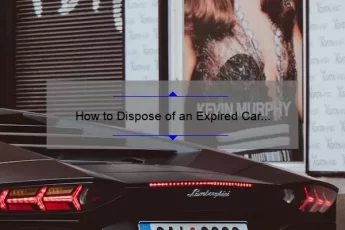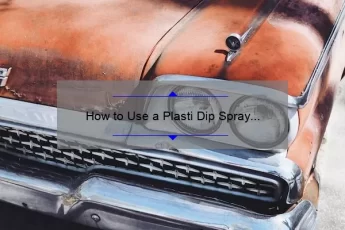Several questions arise when considering running e85 in your car. First, it is essential to know that not all vehicles can run on this fuel. However, older cars should be able to handle this fuel. The power is not as harmful as E85, and it is more eco-friendly for your vehicle.
FFVs
While E85 gasoline contains twice the amount of ethanol than regular petrol, some cars can’t run on it. Fortunately, there are now fueling stations offering E85 for vehicles. Fueling your car with E85 can lead to minor and major problems, so caution is essential.
One of the problems with using e85 is that it tends to absorb moisture from the air, causing your car to corrode more quickly. However, if you use e85 fuel only a few days after purchasing the power, everything should be fine.
The fuel has a higher octane rating, which helps your engine run more efficiently. The octane boost can increase horsepower anywhere from three to twenty percent. However, the exact amount will depend on the type of tuning and engine. However, it’s important to note that ethanol has a higher ignition temperature than unleaded fuel, making it safer to use in your car.
Another benefit of using E85 fuel is the lower cost. Compared to regular gasoline, E85 is about seventy cents cheaper per gallon. But the disadvantage is that E85 is only compatible with some vehicles. It’s best to check your car’s owner’s manual to find the correct fuel type.
You’ll need to change the fuel system if you use E85 fuel in your car. You’ll damage the fuel system if your vehicle isn’t designed to run on E85. It will also void your manufacturer’s warranty. It’s best to consult a mechanic before you begin.
Flexible fuel (FFV) vehicles run on a mixture of gasoline and ethanol. Most gas in the United States contains some ethanol, but FFVs typically have a higher proportion. E85 gasoline for FFVs can prevent 51% to 85% ethanol. The exact percentage will vary by region and season. For instance, if you plan to drive your FFV in the winter, you should reduce the amount of ethanol in the fuel.
Regular gasoline
You can run regular gasoline in an e85 car, but you must ensure your vehicle can handle the E85 before trying it. You should always consult your owner’s manual for specific instructions. You can also contact your car manufacturer to ensure that you can use ethanol in your car.
E85 fuel is cheaper than regular gasoline, and you can save up to 50 cents per gallon. This is great for drivers who want to save money while still getting the benefits of cleaner gas. Another great advantage of using ethanol is that it is cleaner burning, which means fewer emissions and less pollution.
E85 fuel is not available at all gas stations. The most widespread availability is in corn-growing states. You’ll find most E85 fuel sites in the Midwest, where corn is grown. These states also have a variety of gas stations that sell E85.
E85 is a blend of gasoline and ethanol. It is made from plants, primarily corn, but it can also be made in sugar-producing countries. Ethanol has a higher vapor point than regular gasoline, making it difficult to start a car in cold weather. Fortunately, there are warm-weather blends of ethanol.
However, E85 fuel can damage a regular engine. It can also cause the Check Engine Light to come on. If you run your car on E85 fuel, you should always top it off with regular gasoline.
Blends of ethanol and gasoline
L ethanol and gasoline are available for any car, including light trucks and vans. Ethanol is more environmentally friendly than standard gas and improves vehicle performance. The higher ethanol concentration makes the fuel burn cleaner and more relaxed, which helps the engine run more efficiently. However, the ethanol added to the fuel will affect the mileage. Therefore, before using blends of ethanol and gasoline in your car, consider the following factors.
Ethanol is a liquid fuel made from ethyl alcohol. It is produced from various plant sources. As a renewable resource, ethanol can help reduce our dependence on foreign oil and reduce emissions associated with global warming. Ethanol is available in many blends, ranging from 10 percent to 85 percent.
Ethanol is commonly blended with gasoline but can also be used in small engines, including gas engines and lawnmowers. While mixing ethanol and gasoline in larger engines is not legal, it is safe for cars. Some automobile manufacturers even approve the use of ethanol in fuel. However, if you have an older vehicle or a heavy-duty engine, you should use something other than higher blends of ethanol.
Ethanol can improve overall vehicle performance and distance per gallon. The loss depends on your driving habits and the type of vehicle. Higher ethanol blends can lower fuel costs by up to ten cents per gallon. The EPA has approved E15 blends since the start of 2011.
Most gasoline sold in the U.S. contains up to 10 percent ethanol and 90 percent gasoline. This blend meets the requirements of the Clean Air Act of 1990 and is used in conventional gasoline-powered vehicles. Fuel stations must follow EPA regulations and implement a misfueling mitigation plan to minimize the misfuelling risk associated with E15 blends. Though E15 does not qualify as an alternative fuel under the Energy Policy Act of 1992, it helps meet the requirements for the Renewable Fuel Standard.
Some cars that can run on e85 fuel
While E85 fuel is an excellent alternative to conventional gasoline, it may only be suited for some vehicles. Depending on the model, E85 may be harmful to your car. You can check the fuel specifications of your vehicle in your owner’s manual. Increasing ethanol-gasoline blends can help reduce greenhouse gas emissions and our dependence on foreign oil. E85 fuel is also cheaper per gallon than regular unleaded gasoline.
E85 fuel is a blend of 85 percent ethanol and 15 percent gasoline. This fuel has several benefits, including increased knock resistance, which allows your engine to produce more power when it runs smoothly. E85 fuel can also have a higher octane rating than standard gasoline, which can generate more power.
Many vehicles can run on E85 fuel, but it will reduce fuel economy by about 20%. One tank of E85 will only get you 80 percent of the distance you drive with regular gasoline. That means you’ll lose up to 25 miles per gallon on a typical road trip.
Some cars that can run on E85 fuel are made by manufacturers who have embraced the new technology. Ford, for example, makes several vehicles capable of running on E85 power. These manufacturers are leading the way with a variety of cars. Chrysler and Jeep also offer a wide range of E85-capable vehicles.
Some cars that can run on E85 fuel may not be suitable for regular gasoline. E85 energy can cause fuel system corrosion if put into a standard gasoline vehicle. In addition, it can void the manufacturer’s warranty and may cause expensive repairs. Your auto insurance may not cover these costs.
Problems with e85 fuel
E85 fuel is a popular alternative fuel, but it can cause problems with your car. E85 is a liquid with low oxidation levels and can corrode parts of the engine. It can damage the rubber in your fuel lines and intake gaskets. You should always use E85 fuel only once and avoid refueling your vehicle with it for an extended period.
E85 fuel is especially bad for cars that cannot handle flexible powers. Older vehicles and hybrids are not designed to use ethanol. The energy is also corrosive to fuel system components, so older cars aren’t a good fit for running E85 in them. Depending on your car, you may need to make modifications or replace some components running on E85. You may also need to change your fuel hoses to use the new blend.
E85 fuel has higher ethanol content than standard gasoline. This can cause severe problems with your fuel system, which can void your warranty. E85 may also cost you money, so check your insurance policy. If your car does not have an FFV, use regular gas instead.
In addition to being better for forced induction cars, E85 has to knock-prevention capabilities. It also allows turbocharged engines to run more considerable boost without damaging their engines. An example of this is the Koenigsegg CCXR. It produced 806 horsepower using premium gasoline, but ten times that amount on E85 fuel. E85 also has a higher latent heat of vaporization than standard gasoline, which means it absorbs more heat from the air intake. This helps your engine to make more horsepower.
Generally, using E85 is not recommended for standard cars. The mixture of ethanol and gasoline is not safe for classic vehicles. However, it can improve fuel mileage. Some people use it in their cars to reduce the pollution released into the atmosphere.








